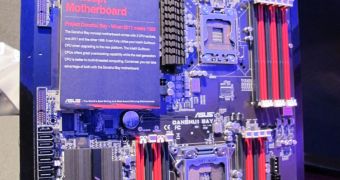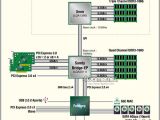Asus's Danushi Bay concept was one of the most interesting motherboards present at this year's Computex fair, but most of the details about its inner workings have remained pretty much a mystery until now, when a recent report managed to explain how the two CPUs installed communicate with each other.
According to 4Gamers, the LGA 2011 and LGA 1366 processors are connected together via a QPI link, just as it's the case with Intel's multi-socket server chips.
This means that the two CPUs will only work in tandem mode when the sockets are populated with Xeon-series processors, as regular Core i7 parts don't have enough QPI links for this mode to work.
The PCI Express slots found on the Danushi Bay board will be run by the integrated controller found inside Sandy Bridge-EP and each of the two chips will be connected to a set of memory slots (tri-channel for LGA 1366 and quad-channel for LGA 2011).
While this design approach enables Asus to use a single chipset for both of these CPUs a number of questions still remain unanswered, as what happens when only an LGA 1366 processor is installed.
Furthermore, it will also be interesting to see what kind of performance boost such a setup can deliver, considering that the processors used are based on different architectures.
Outside of the dual-CPU support, the Danushi Bay motherboard will come equipped with no less than ten SATA 6Gbps ports, four SATA 3Gbps connectors and Asus will also include 7.1-channel audio and a Gigabit Ethernet controller.
The X79 Express chipset will be made official by Intel in the forth quarter of 2011, together with the company's high-performance Sandy Bridge-E processors.
As is the case with many concept products, it's impossible to say if Asus' Danushi Bay will ever see the light of day.

 14 DAY TRIAL //
14 DAY TRIAL // 
